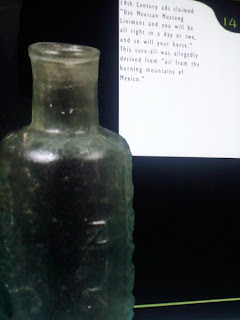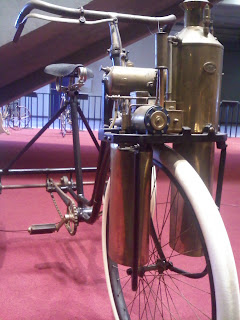Carl Fismer, a world-renowned treasure diver and shipwreck expert, donated a simple yet fascinating artifact to the Key West Shipwreck Treasures Museum. That artifact, from a wreck he discovered near Fort Jefferson in the Dry Tortugas, was a brick. Plain-looking and showing signs of age and wear after spending over a century underwater, this particular brick (above top)nonetheless had a story to tell.
Fort Jefferson, situated on Garden Key - 68 miles from Key West, is a Civil War-era coastal defense fortress. Said to be the largest masonry structure in the Western Hemisphere, there were over 16,000,000 bricks used in its construction. Work on the fort began in 1846 and continued for 30 years, though changes in weapon technology (most specifically the rifled cannon) rendered it obsolete and it was never completed. Following the Civil War, the fort was used primarily as a prison, housing just over 500 prisoners (mostly deserters) including Dr. Samuel Mudd and 3 other men convicted of participation in the Lincoln assassination.
About a mile southwest of the fort near Bird Key in six feet of water lies the “Brick Wreck” (also known as the “Bird Key Wreck”). The “Brick Wreck” is believed to be the remains of the Scottish Chief or another of the ships employed by Asa & Nelson Tift to transport bricks from Pensacola for the fort’s construction in 1854. The Army Corp of Engineers had determined that the yellow bricks made in western Florida were better suited to the region than those imported from the north. The shipping contract was likely granted to the Tift brothers based on their experience navigating the area’s treacherous reefs and shoals as veterans of the local wrecking industry. The 4-bladed prop (above lower) of the shallow draft 126-foot steamer is still intact as well along with portions of the hull. Dated bricks from the ship’s firebox place the wreck between 1857 and 1861.
The brick we were given by “Fizz” bears the impression “BC. WILLIS P.F.B”. A bit of historic detective work has shown this brick to have originated in Pensacola at a brick factory owned by Colonel Byrd Charles Willis, with “P.F.B.” presumably indicating “Pensacola Florida Brickworks”.
Byrd C. Willis was born in Fredericksburg, Virginia in 1781. His grandfather, Colonel Henry Willis, was married to George Washington’s aunt and his father, Lewis Willis, was a schoolmate of the future father of our country. In 1800, Byrd C. Willis married Mary Lewis, whose father was George Washington’s nephew.
Willis served with Madison’s 1st Brigade in the Virginia Militia during the War of 1812, distinguishing himself and attaining the rank of colonel. In 1825 he received an appointment from President Andrew Jackson to oversee federal matters in the newly-acquired territory of Florida. He established a brickworks in Pensacola, ostensibly to help meet the massive demand for bricks in the construction of coastal fortifications.
Colonel Byrd C. Willis had six children. His oldest daughter, Catherine, was married and widowed at an early age. She chose to join her parents in Florida where she met a young French naturalist named Achille Murat. Achille Charles Louis Napoléon Murat (shown below) was the former Prince of Naples and the nephew of Napoleon Bonaparte. The two fell in love and were soon married. While both the Murat and Bonaparte families initially objected to the marriage as the bride was both American and a widow, they were soon swayed by the revelation that Catherine Willis Gray was the grand-niece of the great George Washington.

The two made their home in Florida but traveled the world together, enjoying royal treatment wherever they went. Catherine became known as the Princess Murat. She was present at the coronation of William IV of the United Kingdom and was given a seat in Westminster Abbey. Following the overthrow of Charles X of France in 1830, the Prince attempted to regain a portion of his family fortune. When this failed, the two returned to Florida in 1834.
Following Prince Achille’s death in 1847, Catherine moved to a spartan bungalow near Tallahassee known as Bellevue (today a part of the Tallahassee Museum). It was from here that she dedicated her days to the nation’s first successful historic preservation effort; the Mount Vernon Ladies’ Association – devoted to the conservation of George Washington’s home in Virginia. She died at Bellevue in 1867.















































